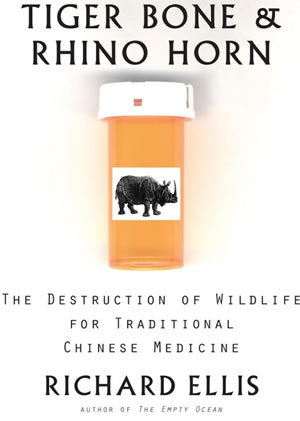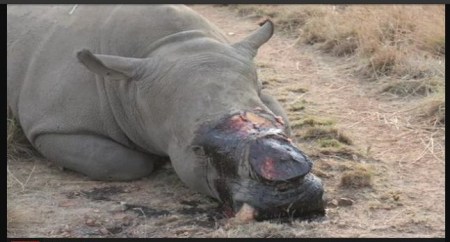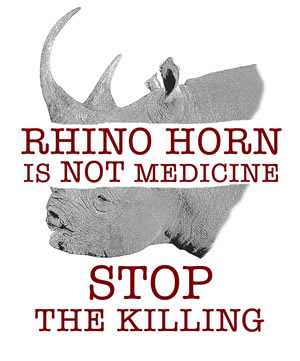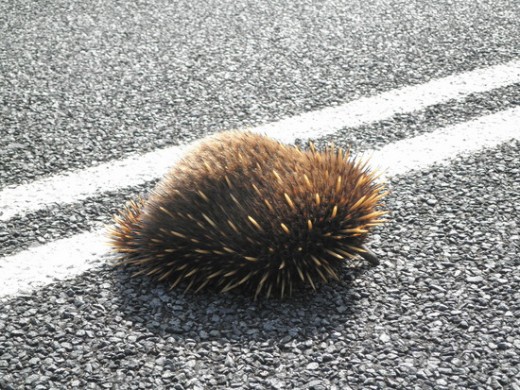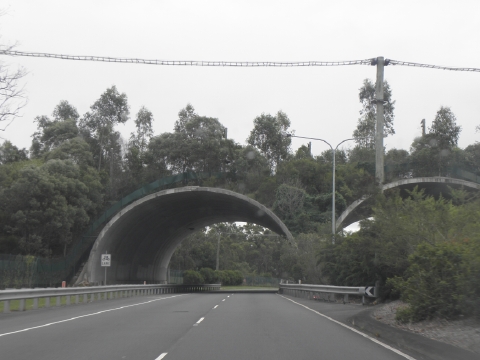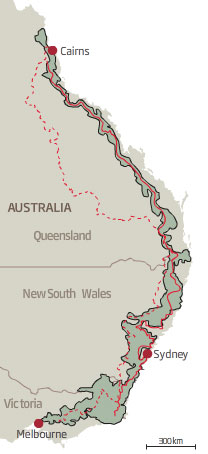Traditional Chinese Medicine is ‘speciescide’
Friday, December 2nd, 2011Mass murder is considered possibly the worst crime that can be committed.
But there is a worse crime than mass murder and worse than war crime, and worse than crimes against humanity. Murder; extermination; torture; rape; political, racial, or religious persecution and other inhumane acts reach the threshold of crimes against humanity only if they are part of a widespread or systematic practice.
Even worse than crimes against humanity is the extreme extension of mass murder – genocide. Genocide is “the deliberate and systematic destruction, in whole or in part, of an ethnic, racial, religious, or national group”. What crime could possible be more evil than the willful targeting of an entire part of the human species in order to systematically wipe it out of existence? – such as what has been attempted upon the Jews, Armenians, Rwandan Tutsis, Bosnian Muslims, Sri Lankan Tamils.
 Armenian Genocide 1915
Armenian Genocide 1915
.
“More inhumanity has been done by man himself than any other of nature’s causes.”
~ (1673) by Samuel von Pufendorf
.
Yet still, there is a worse crime. It is the deliberate and systematic destruction, in whole or in part, of an entire species from the planet. In the same vein as genocide, is human-caused extinction or ‘speciescide‘, a relatively new concept. It is new concept because humans have only recently recognised species extinction as a problem. It is also a new concept because the global rate of non-human species extinction is increasing at an accelerating rate.
‘Speciescide‘ is a derived concept from the ecophilosophy of ‘speciesism‘ being a prejudice manifested as a widespread discrimination practised by humans against other species (Richard D. Ryder, 1973).
Yet deliberately causing a species to become regionally extinct, extinct in the wild or globally extinct, are not yet recognised as crimes legally. Human-caused extinction of a species is not yet a criminal offense.
Yet it is the most immoral crime that can be inflicted on the planet. Even if a nuclear holocaust wiped out 6 billion of the human species, there would still be one billion surviving from which to perpetuate the species. But wiping out an entire species is absolute, irreversible, extincting.
The Convention on the Prevention and Punishment of the Crime of Genocide establishes “genocide” as an international crime, which signatory nations “undertake to prevent and punish.”
It says that genocide means any of the following acts committed with intent to destroy, in whole or in part, a national, ethnical, racial or religious group, as such:
- Killing members of the group;
- Causing serious bodily or mental harm to members of the group;
- Deliberately inflicting on the group conditions of life calculated to bring about its physical destruction in whole or in part;
- Imposing measures intended to prevent births within the group;
- Forcibly transferring children of the group to another group.
.
Speciescide is a worse crime than described by the above definition of genocide and even worse than the previous “the deliberate and systematic destruction..” definition.
Speciescide is ecological genocide. It entails annihilating very member of a species until there is no surviving individual on the planet – the entire species becomes globally extinct. They will never be seen again on the planet. Speciescide is thus the worst hate crime possible. Speciescide is what Tasmanian colonists did to the Thylacene. It is what Traditional Chinese Medicine has just committed upon Africa’s Western Black Rhinoceros.
.
.
‘Africa’s Western black rhino declared extinct’
[Source: ‘Africa’s Western black rhino declared extinct’, Los Angeles Times, 20111010, ^http://latimesblogs.latimes.com/world_now/2011/11/africa-western-black-rhino-extinct-conservation.html].
Africa’s Western black rhino has officially been declared extinct and other subspecies of rhinoceros could follow, according to the latest review by a leading conservation organization.
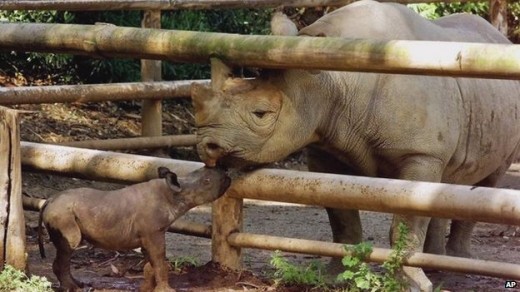 Western Black Rhino and her calf – never again on the planet
Western Black Rhino and her calf – never again on the planet
.
The International Union for Conservation of Nature listed the Northern white rhino in central Africa as “possibly extinct in the wild” and the Javan rhino as “probably extinct” in Vietnam.
The organization blamed a lack of political support for conservation efforts in many rhino habitats, international organized crime groups targeting the animal, increasing illegal demand for rhino horns and commercial poaching.
“In the case of both the Western black rhino and the Northern white rhino, the situation could have had very different results if the suggested conservation measures had been implemented,” Simon Stuart, chairman of IUCN’s Species
Survival Commission, said in a statement Thursday. “These measures must be strengthened now, specifically managing habitats in order to improve breeding performance, preventing other rhinos from fading into extinction.”
The last Javan rhino in Vietnam is believed to have been killed by poachers in 2010, reducing the species to a tiny, declining population in Java.
.
The rhinos were among more than 61,900 animal and plant species reviewed for the IUCN’s latest Red List of Threatened Species. A quarter of the mammals on the Red List were found to be at risk of extinction. But the organization said there
have also been conservation successes. Fewer than 100 Southern white rhinos survived at the end of the 19th century, but the population in the wild is now believed to number over 20,000. Numerous other species are threatened, including many types of plants. The Chinese water fir, which used to be widespread throughout China and Vietnam, was listed as “critically endangered,” due primarily to expanding intensive agriculture. The IUCN also listed five out of eight tuna species as “threatened” or “near threatened,” and added 26 recently discovered amphibians to the Red List, including the blessed poison frog.
“This update offers both good and bad news on the status of many species around the world,” said Jane Smart, director of the IUCN Global Species Program. “We have the knowledge that conservation works if executed in a timely manner, yet, without strong political will in combination with targeted efforts and resources, the wonders of nature and the services it provides can be lost forever.”
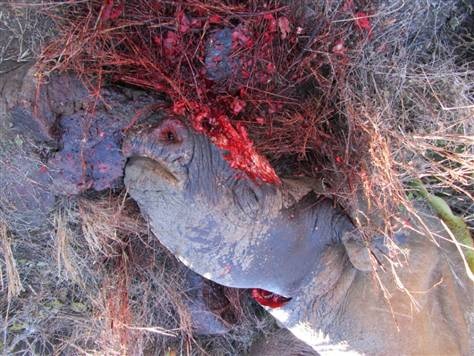 Stumpy’s lifeless body, her life stolen by poachers
(Photo credit: Lewa Wildlife Conservancy)
.
Stumpy’s lifeless body, her life stolen by poachers
(Photo credit: Lewa Wildlife Conservancy)
.‘Stumpy was the oldest female black rhino at the Conservancy, and had spent 26 years enjoying her freedom on the property. Her eighth calf, only a year and a half old, was dealt a minor wound to the neck in the incident and will survive. Coincidentally, on the day Stumpy drew her last breath, a first breath was taken by a newborn rhino at the rhino refuge.’ .
[Source: ^http://bushwarriors.wordpress.com/tag/rhino-horn-trade/page/6/] .
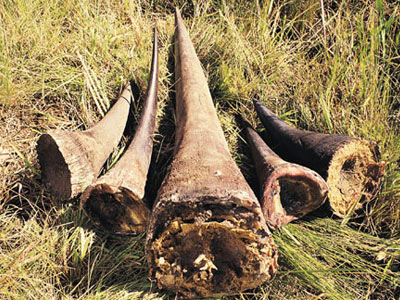
.
.
‘DEAD MEN DON’T DEAL’ Campaign
.
Rhinos have been slaughtered to near extinction to satisfy the demand of rhino horn products in China and Vietnam. All based on rhino horn cultural myths. It has the same effect as chewing ones fingernails.
China is costing the world its rhinos.
.
- It is seen as a remedy for nearly everything (evil possession included) in China and Vietnam
- China and Vietnam fund international organized poaching teams to kill rhino.
- Science proves there is no medicinal value about rhino horn.
- Rhino is said to be the most endangered species to date.
.
However, even if Chinese trade makers are aware that the Rhino population is on near brink to extinction; the continual demand for rhino horn persists.
Unless a serious measure evolves, Chinese businessmen will not stop.
(Ed: This is speciescide)
So, the idea sprung to mind to form a campaign that will create a cultural scare. Namely, the DEAD MEN DON’T DEAL campaign that revolves around the sudden deaths of dealers. Without knowing who or how these smugglers are tortured it will create a cultural scare amoungst those who are guilty. The idea derives from laying revenge out into the air. The revenge of the rhino. Getting back at those who took away a lot of the rhino population. The main objective here is to create fear for those who are involved in the illegal dealing of rhino horn.
.
Dehorning
The demand for Rhino has become so high that conservation officials have gotten to the point where they actually saw off their horns so rhino poachers will have no cause to kill them. These desperate measures have raised questions if removing Rhino horn impairs the rhino’s ability to survive or reproduce; one usage of the horn is to defend a mother’s young from predators.
Many parks and game reserved have battled the on going poaching around this endangered specie. Dr David Mabunda- Chief executive of SANParks stated that it is no longer appropriate to refer to this illegal action as poaching anymore as the levels of sophistication, violence and money behind it continue to raise. He also stated that the country has been working hard to bring this nearly extinct specie back, even if it requires one to become the last standing man.
Endangered stats continue to rise as reports keep coming in. In January an epidemic occurred where poachers were found using aircraft to hunt down rhino in Harare-Zimbabwe, as demand in Asia was great due to medicinal benefit growth. 7 endangered rhinos were killed, this representing one third of 22 rhinos poached throughout 2010. South Africa has about 1000 surviving rhino’s n which extra help for their existence has been sent, last year 333 rhinos were poached in South Africa nearly three times as many then 2009. However, 2011 proves to have lowered the killings. South Africa has over 21 000 more rhinos then any country in the world which puts the country as well as the animals in greater danger.
Demands in Vietnam have been noticed to increase. The black market offers huge amounts of money for trading these species for Traditional Chinese Medicine such as high blood pressure and other impairments. Experts state that as little as 5 rhinos remain in Vietnam. South Africa has become internationally known for banning rhino horn distribution.
World efforts to ‘demystify’ the medicinal affects of rhino horn fail to reach Asia and thus the uproar continues.
[Source: ^http://savetherhino.wordpress.com/].
.
“For one species to mourn the death of another is a new thing under the sun. The Cro-Magnon who slew the last mammoth thought only of steaks. The sportsman who shot the last passenger pigeon thought only of his prowess. The sailor who clubbed the last auck thought of nothing at all. But we, who have lost our pigeons, mourn the loss. Had the funeral been ours, the pigeons would hardly have mourned us. In this fact, rather than in Mr. DuPont’s nylons or Mr. Vannevar Bush’s bombs, lies objective evidence of our superiority over the beasts.”
.
~ Aldo Leopold: ‘A Sand County Almanac, and Sketches Here and There‘, 1948, Oxford University Press, New York, 1987, pp. 109-110..
.
.
Further Reading:
.
[1] Book: ‘ Tiger Bone and Rhino Horn: The Destruction of Wildlife for Traditional Chinese Medicine‘by Richard Ellis
Format: Hardcover, 294 pages, Revised and Tea Edition
Release Date: 27 May 2005
‘In parts of Korea and China, moon bears, black but for the crescent-shaped patch of white on their chests, are captured in the wild and imprisoned in squeeze cages, where steel catheters drain their bile as a cure for ailments ranging from upset stomach to skin burns. Rhinos are being illegally poached for their horns, as are tigers for their bones, thought to improve virility. Booming economies and growing wealth in parts of Asia are increasing demand for these precious medicinals while already endangered species are being sacrificed for temporary treatments for nausea and erectile dysfunction. Richard Ellis, one of the world’s foremost experts in wildlife extinction, brings his alarm to the pages of “Tiger Bone & Rhino Horn”, in the hope that through an exposure of this drug trade, something can be done to save the animals most direly threatened. Trade in animal parts for traditional Chinese medicine is a leading cause of species endangerment in Asia, and poaching is increasing at an alarming rate. Although most of traditional Chinese medicine is not a cause for concern because it relies on herbs and other plants, as wildlife habitats are shrinking for the hunted large species, the situation is becoming ever more critical. Ellis tells us what has been done successfully, and contemplates what can and must be done to save these rare animals from extinction.’.
[Source: ^http://www.fishpond.com.au/Books/Tiger-Bone-and-Rhino-Horn-Richard-Ellis/9781559635325] .
.
